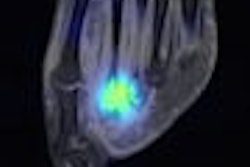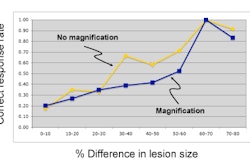Directly capturing images of patients transferred from referring hospitals can be more effective than importing images from CDs or dealing with films, according to a team from Geisinger Medical Center (GMC) in Danville, PA.
GMC is a rural, level I trauma center that serves multiple small hospitals over a large geographic footprint throughout Pennsylvania. Many of the referring hospitals and Geisinger's trauma department wanted a better way of getting images for trauma patients to the hospital before the patients arrived, as well as a way for images to be viewed either at home or at multiple workstations throughout the hospital, said Mary Holdren, a technical analyst for imaging informatics at Geisinger.
Users also wanted the images to be stored on the Geisinger PACS network, so they wouldn't have to rely on third-party software on CDs to view the images, said Holdren, who discussed the institution's experience at the recent Society for Imaging Informatics in Medicine (SIIM) meeting in Seattle.
GMC considered three alternatives for dealing with these trauma transfer patients. The group could stick with the status quo, employ standalone PCs in clinical areas throughout the hospital, or utilize an edge server service with initial funding from a startup regional health information organization (RHIO), Holdren said.
The latter approach would place multiple servers at multiple referring hospitals, linked to a central archive. After the initial funding from the RHIO ran out, each hospital would have to pick up the cost each month to store the servers and send the images, she said.
Instead, the institution decided to work with one of the referring hospitals and have the hospital directly send the images from its PACS network to the Geisinger PACS. Sharing priority with the technical aspects of the project were several legal issues that needed to be addressed, including formal business agreements between Geisinger and the transferring hospital, outlining the HIPAA requirements, and the question of who was going to pay for the T1 line between the hospitals. In addition, a legal opinion was sought for the storing of outside images in the GMS PACS, Holdren said.
"We did find out from our legal department that because these patients are transfers, they have signed authorization to transfer all of their records to our hospital," she said. "They are now our images and we can store them."
GMC already had some connectivity with the pilot hospital through a pediatric echo program, so they were able to use the line already being paid for. Some networking difficulties had to be worked out between the hospitals, as GMC didn't want to give out the IP address of their PACS network, she said. The two networking departments developed a solution that would send the images back to GMC through a firewall, and the images would then be sent on to the archive.
Bandwidth was also a concern because the referring hospital was located some distance from GMC. After testing the system, GMC found that transmission for a single study, either a CT or a pediatric echocardiography exam, took seven to 10 minutes. Transmission time for simultaneous transfer of both images was approximately 20 minutes.
"This was acceptable because it was going to take at least 25 minutes to get the patient from that hospital to our hospital," she said. "So our ED physicians or trauma physicians could still view the images before they arrived."
Setting up the workflow turned out to be the most challenging aspect of the service. To avoid having relevant patient information faxed over, a secure Web site was established for the referring hospital to log in to and enter all of the information. After the information is entered, it's sent to a secure e-mail account at Geisinger.
A page is then sent to the CT technologist to alert him or her that images are available from the trauma transfer. The images arrive in the PACS exception handler, and all of the Geisinger physicians know to look there for the images, Holdren said.
The ED and trauma provider then decide if they need a second read on the images, whether to store them for comparison, and if additional imaging studies are needed. If more studies are needed, either a clerical person or the technologist will schedule the exam and then attach the images.
"The only flaw we had was that after go-live, our neuroradiologists found that we were really getting a lot of neuro CT cases, and because we're a trauma center, we have certain protocols that we like to do in the exams and they weren't being followed," she said. "So they didn't feel that these images were up to par for the trauma center to be able to diagnose any injuries. So what happens is the ED provider will contact the radiologist on call, who will look at them and say yes, these images are acceptable, or no, we need to rescan."
If that happens, those images are automatically kept for comparison, she said.
By Erik L. Ridley
AuntMinnie.com staff writer
July 14, 2008
Related Reading
Mayo pares PACS limitations with intelligent image routing, June 11, 2008
Software unifies control of multiple informatics applications, June 2, 2008
Communication and prevention are key to minimizing PACS downtime effects, May 19, 2008
Using informatics to meet communication challenges, February 7, 2008
High-tech communication tools improve patient care, studies find, December 6, 2007
Copyright © 2008 AuntMinnie.com




















